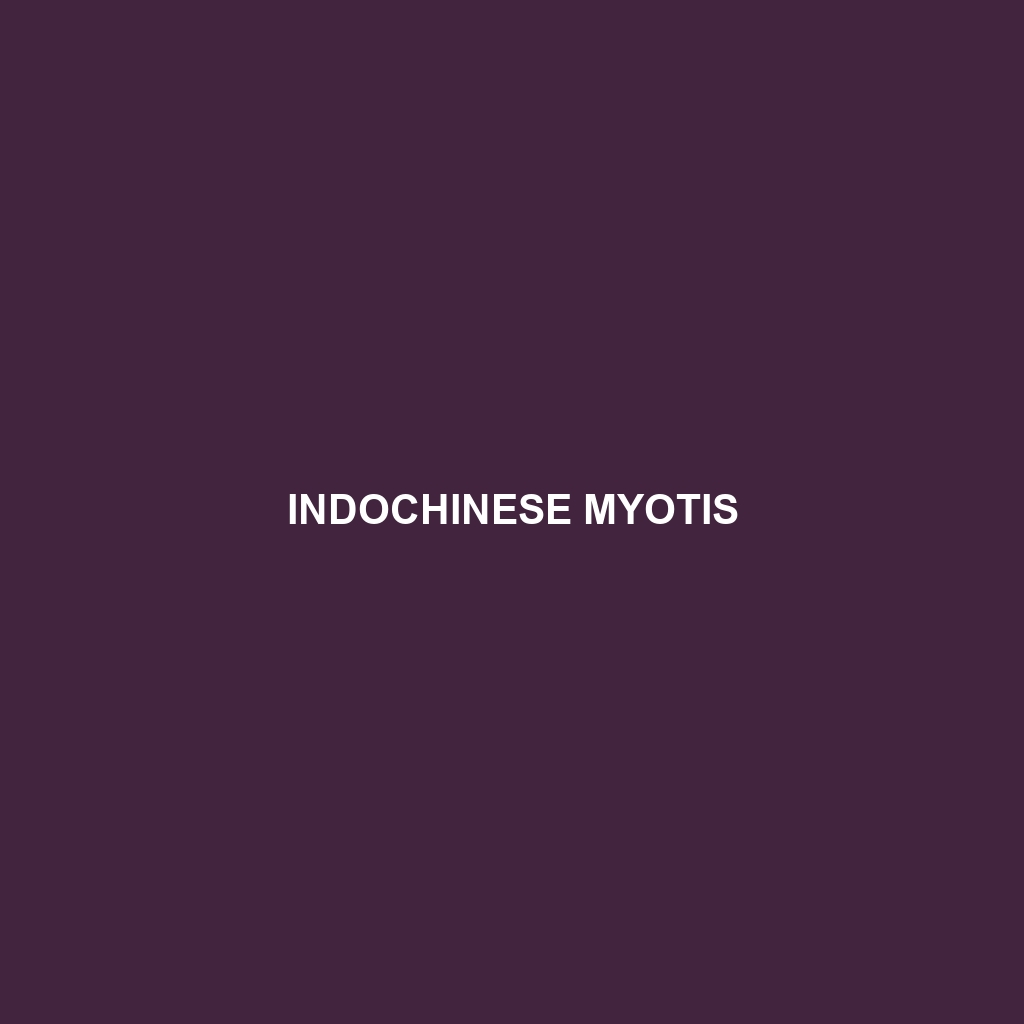Indochinese Myotis
Common Name: Indochinese Myotis
Scientific Name:
Habitat
The Indochinese Myotis, also known as the Indochinese long-fingered bat, primarily inhabits regions across Southeast Asia, including countries such as Vietnam, Thailand, Laos, and Cambodia. This bat prefers forested areas and is often found in caves, rocky outcrops, and other natural shelters. Its presence in both tropical and subtropical environments highlights its adaptability to various ecological conditions.
Physical Characteristics
Indochinese Myotis typically measures between 8 to 10 cm in body length, with a wingspan ranging from 24 to 28 cm. The fur is generally a mix of browns and grays, with a lighter underbelly. Distinctively, the Indochinese Myotis has elongated fingers and large ears that aid in echolocation, a vital feature for navigating in dimly lit habitats. Its slender body and pointed snout are notable attributes, making it visually distinct among other bat species.
Behavior
This species exhibits nocturnal behavior, primarily becoming active during the night to forage for food. Indochinese Myotis is known for its agile flight and can often be seen darting around forests and open spaces. Socially, these bats typically roost in small colonies, enabling them to communicate and navigate their environment efficiently. Their echolocation abilities are exceptional, making them adept hunters of insects.
Diet
The diet of the Indochinese Myotis mainly consists of insects, including moths, beetles, and various flying insects. This bat plays a crucial role in controlling insect populations within its habitat. Its feeding habits are primarily guided by echolocation, enabling it to detect prey in complete darkness, which is essential for its survival.
Reproduction
The Indochinese Myotis breeds once a year, usually during the warmer months when food availability is higher. Female bats typically give birth to a single pup, which they nurse and care for until it is capable of flight. Mating occurs in late summer, ensuring the pups are born at an optimal time for survival, usually in May or June.
Conservation Status
As of the latest assessments, the Indochinese Myotis is listed as a vulnerable species by the International Union for Conservation of Nature (IUCN). Threats to its population include habitat loss due to deforestation and mining activities, as well as disturbance caused by human encroachment in roosting sites.
Interesting Facts
One fascinating aspect of the Indochinese Myotis is its remarkable longevity; it can live up to 15 years in the wild. Additionally, these bats have a unique social structure, often forming intricate roosting groups that reflect complex social behaviors.
Role in Ecosystem
The Indochinese Myotis plays a vital role in its ecosystem by acting as a natural pest controller. By consuming large quantities of insects, these bats help maintain ecological balance, supporting agricultural health and preventing insect populations from reaching damaging levels. Their existence is also key to pollination and seed dispersal in their habitats, further underscoring their ecological importance.
